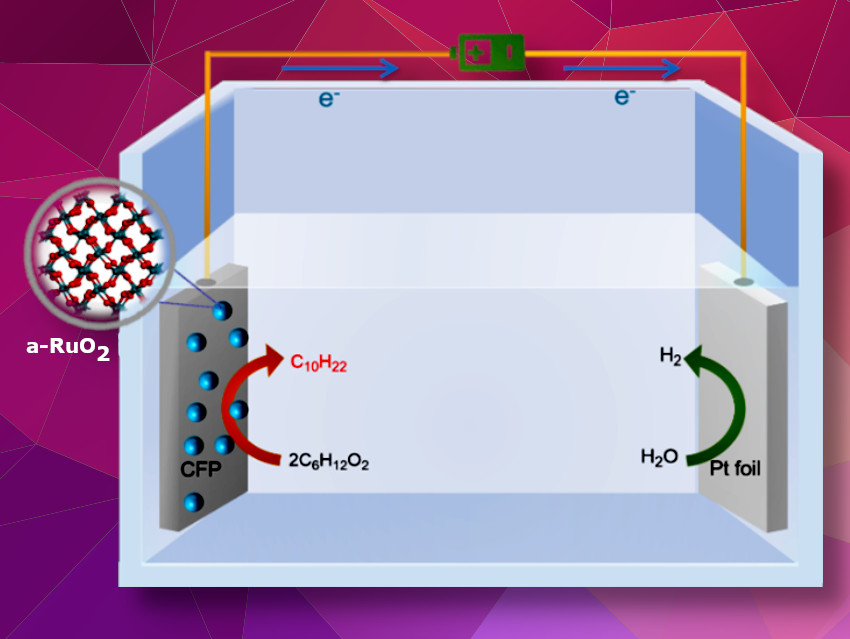Volatile organic fatty acids (VFAs) are widely available and easily accessible renewable substrates obtained through waste and biomass fermentation. These VFAs serve as excellent candidates for upgrading into carbon-neutral biofuels, and Kolbe electrolysis offers a promising approach for their conversion in an aqueous environment.
Although platinum has traditionally received attention for its high efficiency and stability in Kolbe electrolysis, its large-scale application is hindered by its scarcity and high cost. To address this challenge, Jason Chun-Ho Lam, Wang Chong, and colleagues, City University of Hong Kong, have developed an amorphous RuO2 (a-RuO2) catalyst with oxygen vacancies using a hydrothermal method (picturd below). This novel catalyst demonstrates comparable electrocatalytic performance to platinum.

The team evaluated the catalyst’s effectiveness using hexanoic acid (C6H12O2) as a model substrate, successfully producing decane (C10H12) through selective decarboxylative condensation. Notably, the researchers observed that the a-RuO2 catalyst showed significantly larger electrochemically active surface areas compared to standard crystalline RuO2, resulting in improved electrocatalytic activity.
Furthermore, this transformative approach can also be extended to other organic fatty acids such as heptanoic acid or octanoic acid. Cost-performance analysis of the electrocatalyst revealed that the use of a Ru-based catalyst is significantly cheaper than other known precious metals, including Pt, Ir, and Pd. These findings present a promising alternative to platinum catalysts, offering improved performance and addressing the limitations associated with their scarcity and cost.
- Selective Kolbe Electrolysis of Medium Size Carboxylic Acid to Alkane Dimer in an Aqueous Environment with an Amorphous RuO2 Catalyst,
Lam, Chong Wang, Kaixin Liu, Yangxin Jin, Shuquan Huang, Jason Chun-Ho Lam,
ChemSusChem 2023.
https://doi.org/10.1002/cssc.202300222



